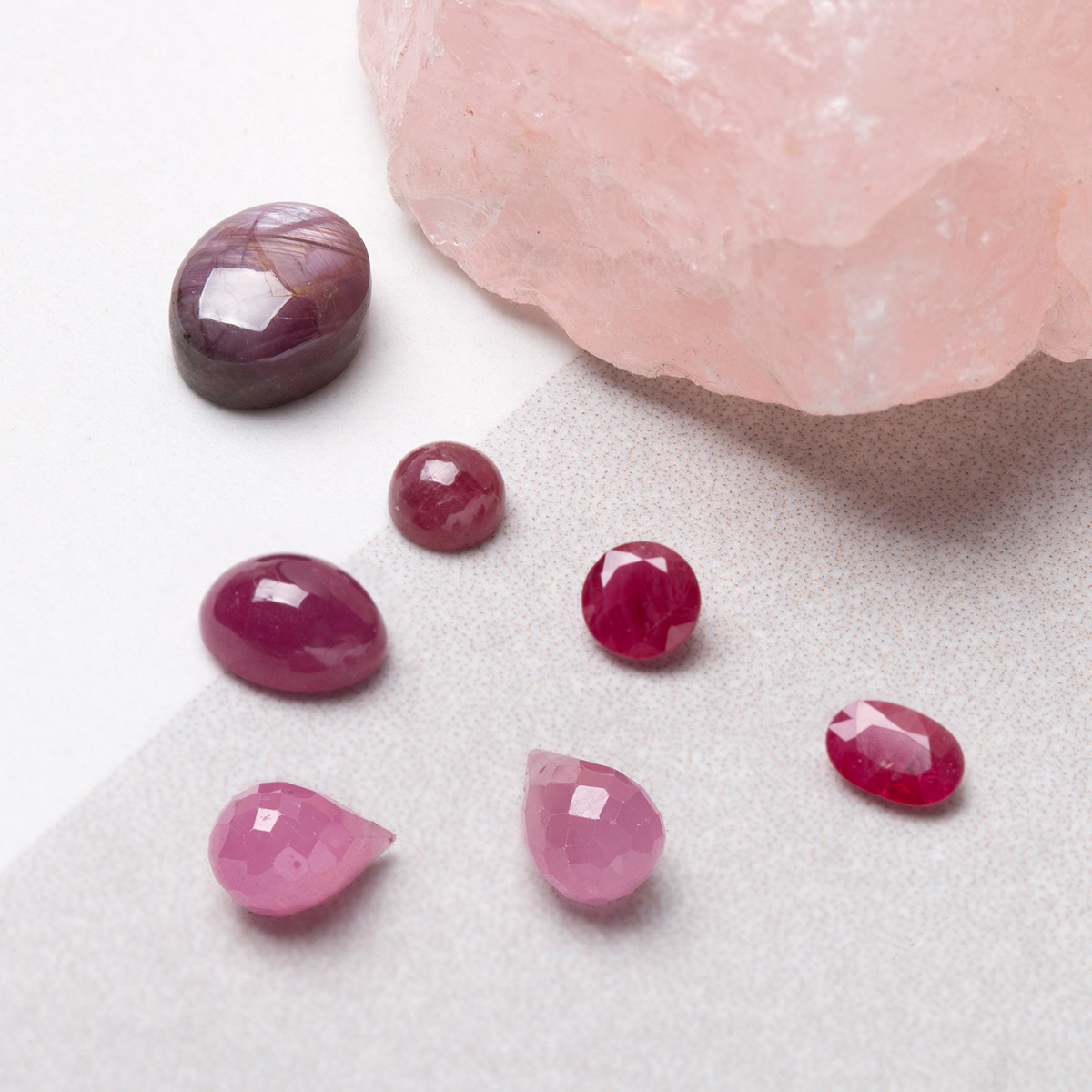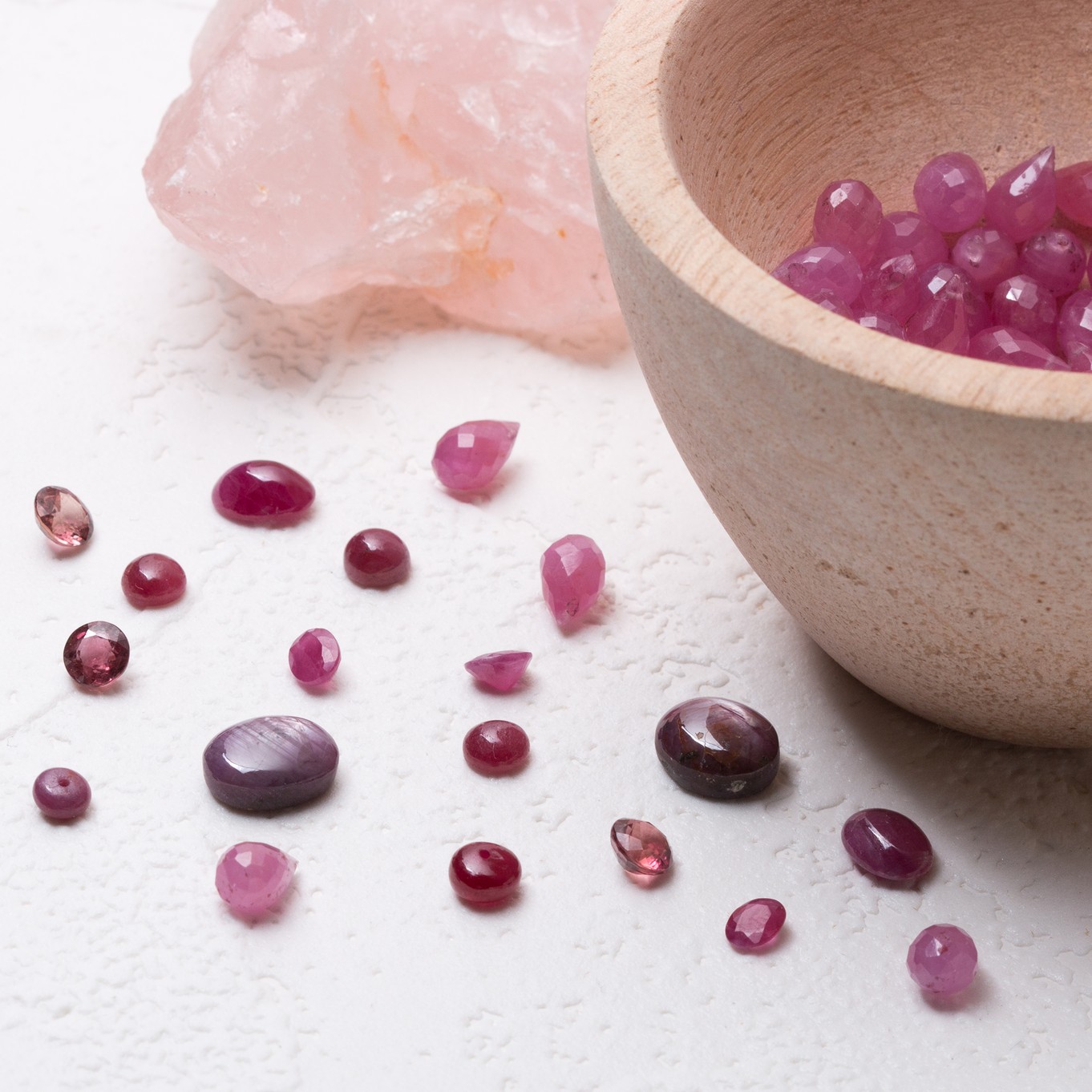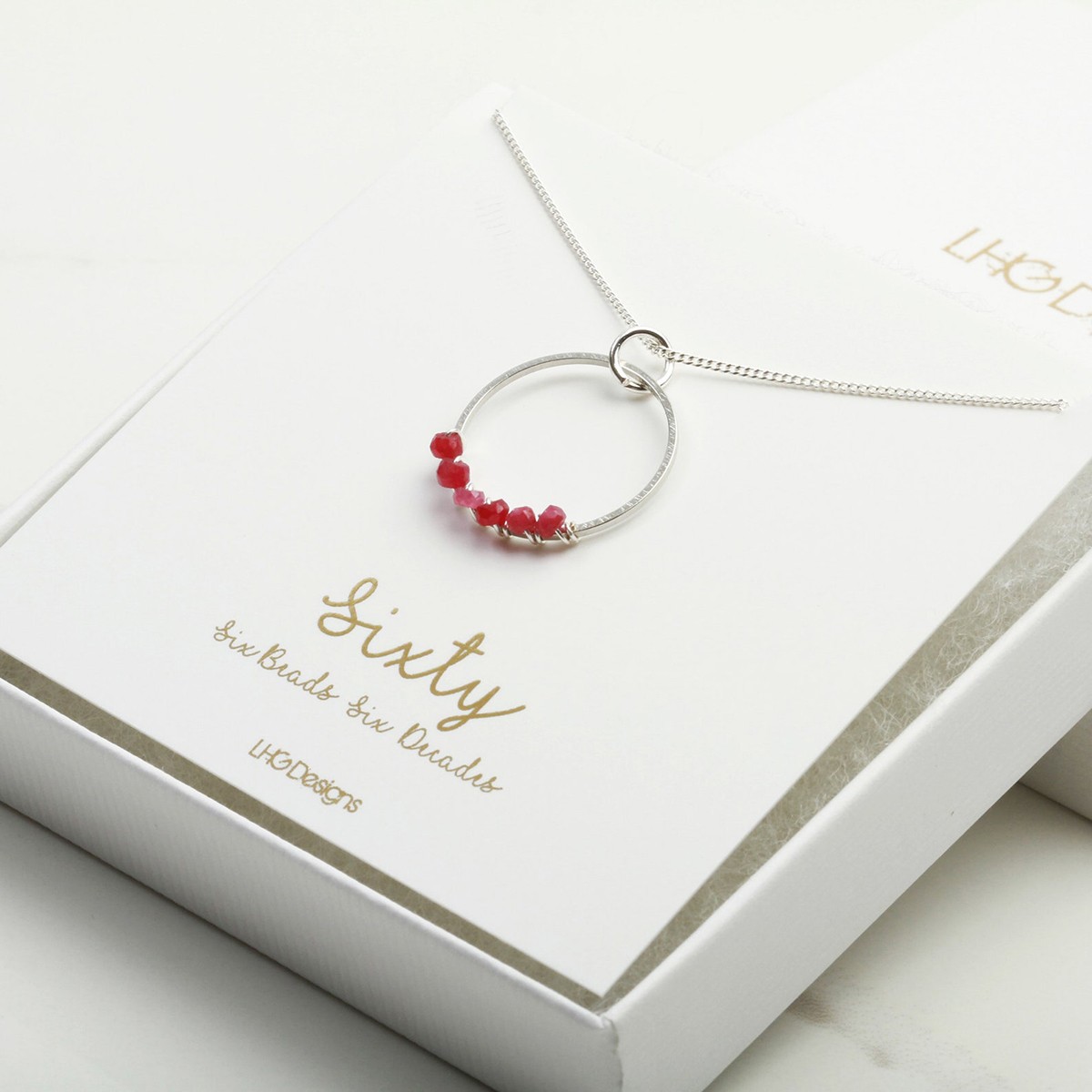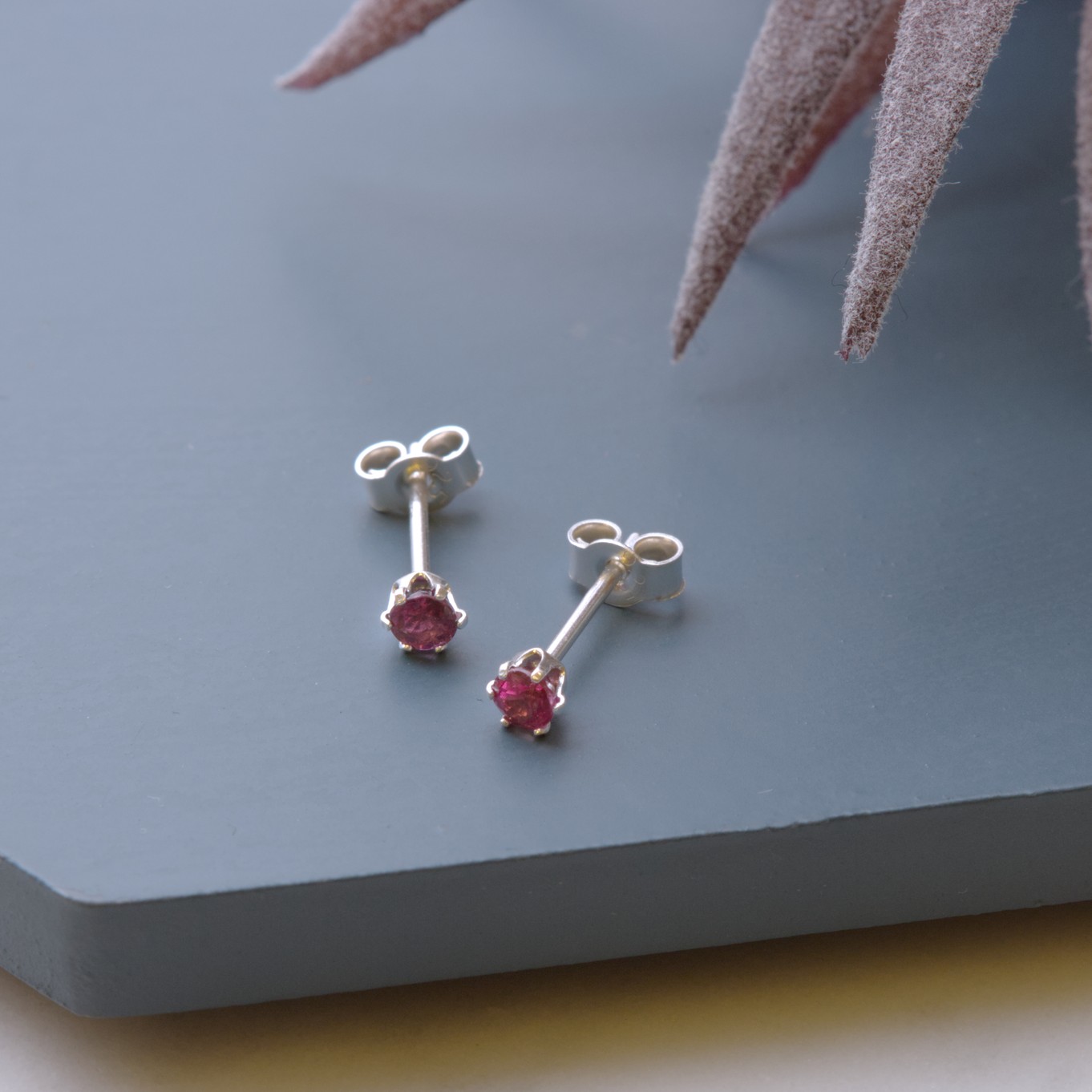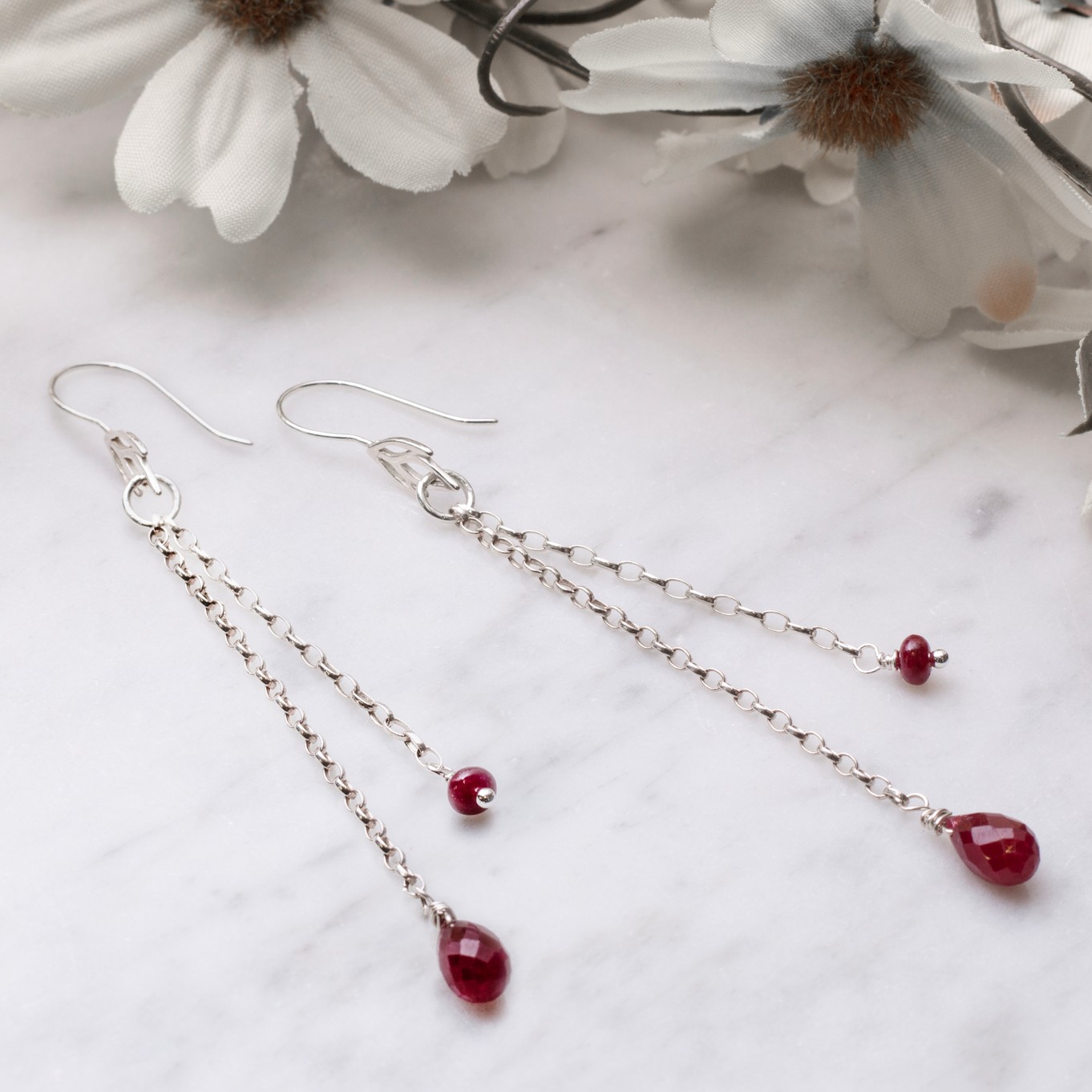Ruby: The July Birthstone
Ruby is the beautiful birthstone of July. Ruby is what is known as a precious stone and has been very highly valued throughout history, known as the king of precious stones!
As the hardest mineral after diamond, this beautiful gemstone has some fascinating properties and rich history. We supply ruby gemstones in a variety of types and cuts and in this blog post we cover the formation of ruby, its history, properties and of course its uses and possibilites in jewellery design.
Ruby Facts
Colour: Rubies vary from deep shades of red to dark pink. Chromium is what gives the ruby its rich red colour and it also causes red fluorescence which further enhances its colour. The most desirable colour of ruby is known as 'pigeon's blood', which is pure red with a hint of blue.
Appearance: Inclusions are common, however they do not decrease the value of the stone, instead they help to determine the natural gemstones to the synthetic ones. As a rough stone, ruby appears dull and 'greasy', but when cut, it has great lustre. Ruby has a trigonal crystal structure and many occur as a tabular shape.
Rarity: Rubies are a little rarer than sapphires. There is no shortage of small ruby gemstones, however, large rubies with a high carat are much rarer.
Moh's Scale Hardness: Ruby measures 9 on the Moh's hardness sale. It is the hardest mineral after diamond. It is 7x harder than topaz, which is next on the hardness scale. A ruby's hardness varies in different directions.
Sourced: India, Madagascar, Russia, Sri-Lanka, Cambodia, Kenya and Mexico.
Formation & History Of Rubies
Ruby is a variety of the mineral corundum - this is the same mineral as sapphire. Pure corundum is colourless and the colours of corundum are caused by small amounts of chemical impurities. Chromium gives the rich red of ruby. Sapphire is the name given to all the other gem corundum (but most closely associated with the colour blue). The host rock of ruby is mainly a dolomite type marble which has been formed from limestone by contact caused by heat or pressure from granite.
The Mogok area of Myanmar has produced fine rubies for many centuries. The finest stones with the deepest of reds are often described as 'pigeons blood'. A few are mined from marble, but most are recovered from river gravels.
Ruby is one of the most expensive gems, large rubies being rarer than comparable diamonds. Some gems that were thought to have been rubies throughout history have turned out to be spinels.
The name ruby comes from the latin word Rebeus which means red. It was not until the 1800s that ruby (as well as sapphire) was discovered to belong to the corundum group. Before that date red spinel and garnet were also called ruby.
Learn more about Rubies
Mythology, Healing & Spiritual Properties Of Rubies
Myths of ancient times include that the wearer of a ruby was blessed with health, wealth, wisdom and outstanding success in heart affairs.
In Burma, legend tells that all rubies in the world come from an egg laid by the dragon naga. Ruby was also said to be the most precious of the 12 stones created by God when he created all things. It says in the bible, "wisdom is more important than rubies" - showing how valued it has been for so many years.
Ruby is also thought to be an excellent stone for energy, however, it may sometimes overstimulate in delicate and irritable people.
Ruby is believed to encourage passion for life but never in a self-destructive way, while also improving motivation and setting realistic goals.
In terms of chakras, ruby stimulates the heart chakra, helping to balance and encourage you to follow your bliss. It is believed that ruby promotes positive dreams and clear visualisation as well as aid in retaining wealth and passion.
Ruby is also said to encourage the removal of anything negative from your path and promote dynamic leadership.
Emotionally, ruby is believed to charge up passion. It is a sociable stone that attracts sexual activity. Physically, ruby is said to help overcome exhaustion whilst being able to calm hyperactivity.
Jewellery Design Using Rubies
Rubies have been used in jewellery for centuries and have long been associated with wealth and royalty. Queen Elizebeth's ruby earrings, and v-shaped ruby and diamond bandeau collar are famous examples of rubies used in royal jewellery.
Many of the rubies available on the accessible jewellery making market today are of small sizes. Sourcing larger rubies become very expensive.
Rubies are great for jewellery making as they are strong, they can withstand high temperatures and therefore can be incorporated into many different settings.
Juicy ruby beads hand wrapped around a silver pendant to make a pretty birthstone necklace handmade by LHG Designs.
Elegant ruby tube set pendant made by Yvonne Hutchen.
Ruby Snaptite Earstuds
Use July's birthstone to create a beautiful gift in seconds! Our sterling silver snaptite earstud settings are so easy to set and perfect for beginners, making them so popular.
Resources:
- The Crystal Bible - Judy Hall
- Healing Crystals - Cassandra Eason
- Gemstones of the World - Walter Schumann
- Gem Brokers
Also in this section:
- What is Amethyst Trapiche?
- The Chakras & Stones For Beginners
- Rare Ammolite For Jewellery Making
- 5 Gemstones To Honour Your Mum
- Top Gemstones For Love & Valentine's Day
- 5 Gemstones To Wear On Your Travels
- Mohs Hardness Scale, Gemstone Durability & Jewellery Making
- Top 10 Affordable Gemstones For Jewellery Making
- Your Guide To Anniversary Gemstones & Jewellery Making
- Your Guide To Birthstones & Birthstone Jewellery
- Discover Rare Cornish Turquoise
- Garnet: The January Birthstone
- Amethyst: The February Birthstone
- Aquamarine: The March Birthstone
- Diamond: The April Birthstone
- Emerald: The May Birthstone
- Pearl: The June Birthstone
- Ruby: The July Birthstone
- Peridot: The August Birthstone
- Sapphire: The September Birthstone
- Opal: The October Birthstone
- Topaz: The November Birthstone
- Turquoise: The December Birthstone
- Types Of Diamonds For Jewellery Making
- Lapis Lazuli, The Stone For Truth & Communication
- Types Of Agate Stones For Jewellery Making
- What Are Precious & Semi-Precious Stones?
- Watermelon Tourmaline For Jewellery Making
- 6 Stones For Alternative Engagement Rings
- Rare Tanzanite For Jewellery Making
- Gemstones For Your Inner Mermaid
- 5 Spiritual Gemstones To Help Your Mind & Body
- Rose Quartz, The Love Stone
- What Are Drusy Gemstones?
- What Is A Boulder Opal & How Do We Source Them
- All About Our Natural Untreated Turquoise

